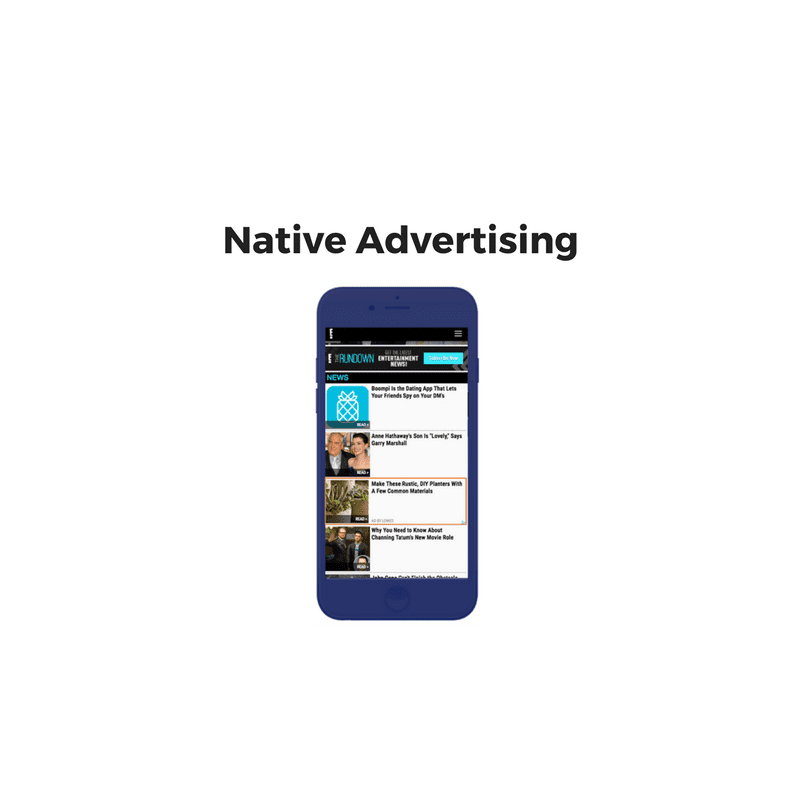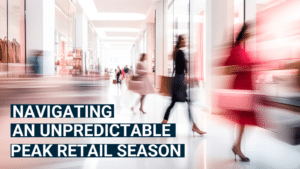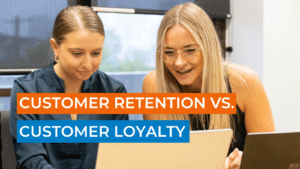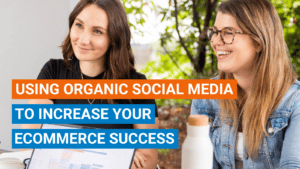Mobile has been a hot topic in the advertising and marketing industry for a couple of years now. But this didn’t stop top marketers around the global discussing its continued impact on brands during the New York Advertising week in late 2017.
Over the past 2 years, mobile advertising has become one of the fastest growing sectors in the industry, and Australia is no exception. Locally, we saw a 33% growth in Australian market. One of the key drivers in mobile advertising growth is Native Advertising, which is predicted to account for more than 60% of mobile ad revenue by 2020!
But why has Native advertising has seen such an incredible growth globally? And most importantly as Marketers, how do we tap into this growing trend to deliver results? Read on to find out!
The Continued Growth of Mobile
I was lucky enough to attend the New York Ad Week with our Paid & Remarketing Portfolio Manager, Sophie Villard. As mentioned in her rundown of Ad Week 2017, the growth of mobile is still on everyone’s lips for 2017 and 2018. Locally, we have one of the highest smartphone ownership rates globally, with around 95% of people between 12 to 54 owning a smartphone. That’s much higher than the 81% smartphone ownership in United States.
What does this mean? Consumers now have a portable super computer that they can fit into their pocket. They can do more with their smartphones, and they are crying for a better mobile experience.
Native Advertising Offers a Better Experience on Mobile
As Marketers, we often forget the purpose of the internet; it wasn’t designed for businesses to sell goods or services, but rather for people to simply find the information they needed, be entertained, and connect with others.
In a mobile environment, users are learning to ignore the obvious ads that appear on a page that distract them from the task at hand (e.g reading news, watching cat videos, catching up on social feeds). Instead of trying to yell louder to demand the attention of consumers, we need to consider what we can do to better the online experience. Native advertising is one of the advertising formats that has the consumer experience as a priority, and so is a good thing to consider for your advertising.
So What is Native Advertising?
In its most simple definition, Native advertising resembles the editorial content organically posted by a publisher, with the only difference being that it is sponsored by the advertiser. This allows for a seamless placement that is much more likely to engage readers.
Native advertising can take several different forms, however for sake of this article we’ll focus on the application of Sponsored Articles and other written pieces on publisher websites.
How is Native Advertising Different to Banner Advertising?
Very simply, Native is less intrusive than display/banner ads. Unlike the traditional display advertising on a mobile, where ads are inserted between publisher content, Native adverting is designed to blend into the environment around them. In the mock-ups below, you can see the difference in appearance between Native ads versus traditional Banner ads. As the Native ads just look like articles populating in the feed, these look a lot more natural and unobtrusive.
Secondly, display advertising generally takes users to a “conversion page” (for example, a contact us page or product page). Native advertising, on the other hand, generally directs consumers to a content page that is reflective of the ad headline, for example, an article about the top 10 budget gifts for the tech enthusiast in your life. Users can sometimes be directed to a more direct enquiry method, such as a contact form, or even a buy now button if it is featured in the content piece, however the big difference is that these aren’t the focus of the advertising, the content remains the real piece of value.
Lastly, science says users are more likely to engage with Native advertising instead of banner display advertising. Native advertising generally generates twice as much visual attention, and delivers 20% – 60% engagement. In our experience, users who come from a native advertising piece have a much higher dwell time than those who come via traditional banner advertising, which usually translates to much better on-site performance.
Things to remember
Put the needs of the consumer first
Native advertising is not the best place to yell and sell; your content and native advertising strategy should be based on your customer’s journey to ensure you’re hitting them with the right content at the right stage of their buying journey. So, instead of saying “Engagement Rings now 30% off!”, position your ad as “How to choose the perfect engagement ring”. Not only will you build brand awareness and trust, but you may find your consumers value the security of knowing they’ve picked the right ring over a discount.
Good content is the key to any Native advertising strategy
Design your content and Native strategy according to your customer journey (for example, a piece of content to address consumer questions and concerns during the research or evaluation stage). In our experience, short and snappy content works better than long form content. Remember, most of your users will be consuming your content on a mobile device, usually between other activities, so they don’t always have the time to consume lengthy articles.
Keep consumers engaged
It is crucial to ensure users who come from Native advertising campaigns engaged through-out their customer journey. Native advertising is an excellent channel to drive top to middle of the funnel users to your website. However, as we all know that less than 2% of users will take the desired action (e.g. submit an enquiry or purchase a product) on their first few visits to your website. To maximise the user’s chances of eventually converting, make sure you have an appropriate retargeting or lead nurture strategy in place to close the loop.
How can I get started?
There are many ways you can get started with native. In fact, many of us have already started using social media newsfeed ads as Native advertising.
To increase the reach and scale-up your campaign, a good first port of call is to use some of the self-service platforms available from providers such as Outbrain and Taboola. These platforms allow you to set up and run campaigns on your own, however the targeting options for these platforms are usually limited, meaning you often can’t refine your targeting enough to differentiate between target and non-target customers.
To take things to the next level, you can deliver a Native strategy programmatically. Programmatic trading will offer you efficiency, precision and scale at targeting and delivery. The best place to start is talk to your internal digital marketing team or your digital marketing partner and discover the best option for your business.
Like more info? Feel free to give us a call on 1300 714 146 – we’re here to help!























